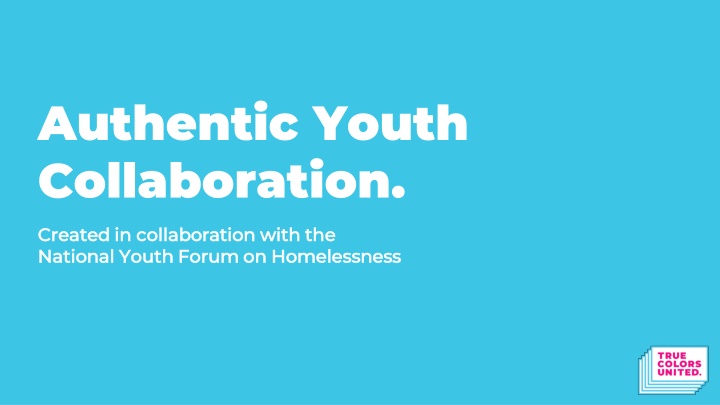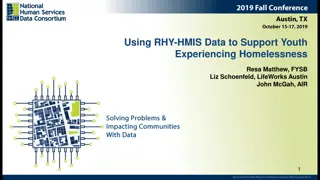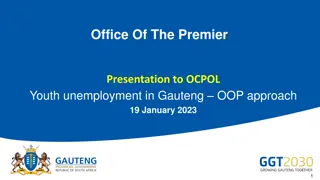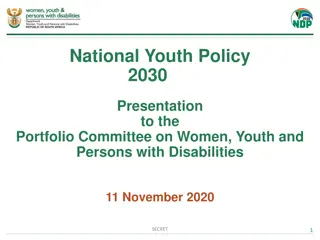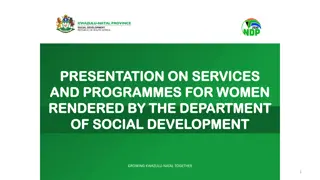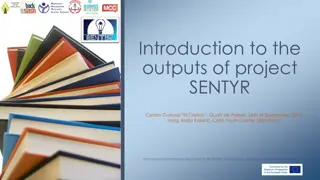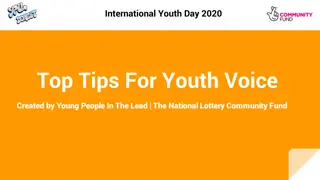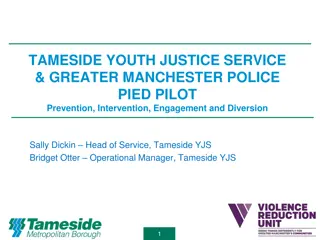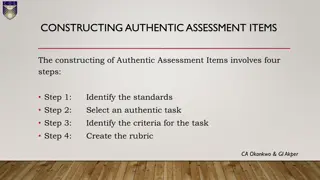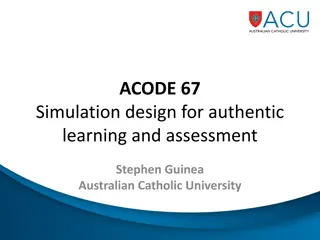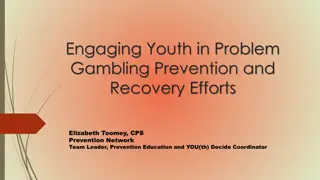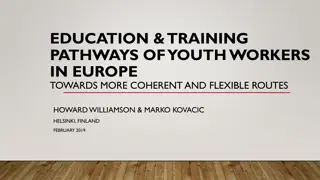Empowering Youth: A Guide to Authentic Collaboration and Challenging Adultism
This comprehensive guide explores the philosophy of Authentic Youth Collaboration, emphasizing the importance of ending youth homelessness. It provides best practices for engaging young people authentically, building frameworks for working with youth, addressing adultism, and collaborating effectively. Learn about creating authentic partnerships, challenging adultism, and understanding ageism in order to empower youth and foster inclusivity.
Download Presentation

Please find below an Image/Link to download the presentation.
The content on the website is provided AS IS for your information and personal use only. It may not be sold, licensed, or shared on other websites without obtaining consent from the author.If you encounter any issues during the download, it is possible that the publisher has removed the file from their server.
You are allowed to download the files provided on this website for personal or commercial use, subject to the condition that they are used lawfully. All files are the property of their respective owners.
The content on the website is provided AS IS for your information and personal use only. It may not be sold, licensed, or shared on other websites without obtaining consent from the author.
E N D
Presentation Transcript
Authentic Youth Collaboration. Created in collaboration with the Created in collaboration with the National Youth Forum on Homelessness National Youth Forum on Homelessness
Objectives. Objectives. Explain the Authentic Youth Collaboration Philosophy and why it s important to our work to end youth homelessness Provide a list of best practices for authentically engaging young people Provide concepts and ideas to consider when building a framework of how to work with youth and young adults Provide concrete examples to address adultism as an adult Provide an index of related resources to supplement your learning Provide a framework for collaborating with youth participants who are engaging in services or programs
Authentic Partnership with Youth/Young Adults. Be intentional about the decision-making power that youth have in your work. Youth are the experts of their own truth. When asking young people to be involved in your work, hear them out and build a reciprocal relationship where you honor their experiences, allowing their experiences and ideas to inform the process.
Introduction to Adultism. What is adultism? Adultism describes the systems of privileged attitudes and behaviors that adults have over those of young people. Adultism is driven by behaviors and attitudes that are based on the assumption that adults are better than young people and therefore entitles them to act upon or on behalf of young people without their agreement.
Introduction to Adultism. What is ageism? Stereotyping and discriminating against people on the basis of age. What is the difference between ageism and adultism? Ageism describes the systems of privileged attitudes and behaviors that younger people have over elders.
Adultism in common language. Respect your elders -- they know better. Older & wiser Childish Immature Too young/Not old enough Children should be seen, not heard Stay in a child s place The more you live, the more you know
Avoiding Barriers to Authentic Youth Collaboration. Building Trust Establishing and building trust is essential in any effective working relationship. Once positive rapport is established, genuine collaboration can begin.
Avoiding Barriers to Authentic Youth Collaboration. Meaningful Engagement An issue that often gets in the way of effective collaboration between youth and service providers is showy engagement, in which young people are invited to participate simply to create the impression of inclusion and diversity.
Avoiding Barriers to Authentic Youth Collaboration. Autonomy Young adults should have the freedom and agency to be the leaders of their own lives. Their autonomy should be promoted as they make decisions about the issues that impact their lives.
Avoiding Barriers to Authentic Youth Collaboration. Sharing Power Young adults need to know that they have power but this should also be reinforced by our systems. Ensure that youth serving systems are informed by YYA by reserving space for YYA to have voting, hiring, and decision making power.
Avoiding Barriers to Authentic Youth Collaboration. Introductions Working agreements Collaborative curriculum (educational spaces) Thank you s Peer empowerment (youth to youth) Skillshare (and compensation) Housekeeping
Avoiding Adultism When Collaborating With Youth & Young Adults Collaborating on Tasks Allowing young people to collaborate directly on tasks that involve or impact them and/or performing tasks that have traditionally been carried out by Older Adult Partners in youth spaces has been proven to create and promote authentic collaboration, thus removing intentional adultist behaviors.
Avoiding Adultism When Collaborating With Youth & Young Adults Online Platforms Connecting online comes with many pros & cons; that for many can be challenging, while others thrive. Currently, during COVID-19 remote work has become commonplace. Reflect on what challenges exist for older adults and young people & how these may manifest when communicating in an online platform. Engage young people in determining what supports are needed.
Avoiding Adultism When Collaborating With Youth & Young Adults Online Platforms Collaborate with young people to navigate expectations online. Allow young people to determine what platform(s) work best for them & what it means to show up in a meaningful way. Consider technological accessibility, tech knowledge and capacity for young people; develop a contingency plan to meet needs.
Avoiding Adultism When Collaborating With Youth & Young Adults What ways can young people safely discuss adultism & discuss solutions with adult partners? How does this currently look? What ways can we begin to change culture to center collaboration & remove adultist behaviors? What should be put in place to combat adultism when it shows up among adult partners?
Input and Feedback from Youth and Input and Feedback from Youth and Young Adults. Young Adults. Set youth and young adult leaders up for success. Create a collaborative environment for input and feedback. Set deadlines. Uplift the impact of their work.
The Listening Session. The Listening Session. Listening sessions are facilitated conversations where youth and young adults ideas and suggestions are uplifted in an essential way. Adult partners in the room are asked to remain silent throughout the process, centering the perspectives of young people with lived experience toward several goals 5 Tips for a successful Listening Session: Build Trust Have an open mind Identify and reframe adultism Engage in active listening Be Specific
Q&A. Resources: https://learn.truecolorsunited.o rg/catalog/ https://truecolorsunited.org/in dex/maine/
